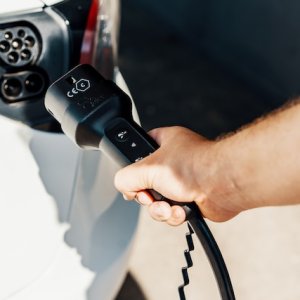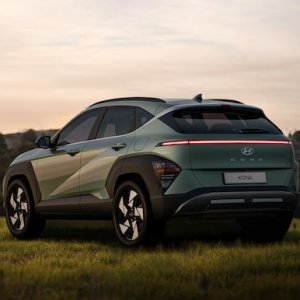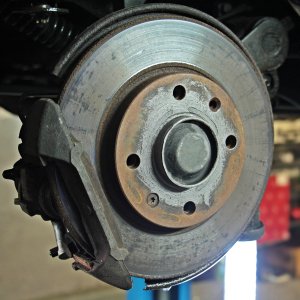
Digitization: Disruption Driver
 By Antonio Gozain | Senior Journalist and Industry Analyst -
Fri, 10/07/2022 - 11:00
By Antonio Gozain | Senior Journalist and Industry Analyst -
Fri, 10/07/2022 - 11:00
While digitalization is already a reality across most industries, increased degrees of innovation and new technologies continue to disrupt the industry. From optimizations within logistics and manufacturing to autonomous driving, shared-mobility models, remote diagnostics and repairs, customized insurance contracts and the aftermarket, digitization fuels the transformation of the automotive supply chain, enabling new business models.
New technologies have permeated companies across the entire supply chain. Logistics has been one of the areas that has benefited the most from innovation. “All technological innovations must be applied to automotive logistics. From route optimization, traceability and fuel savings to the overall reduction of the supply chain’s carbon footprint,” says Milton Magos, Country Manager of UPS Supply Chain Solutions.
Logistics partners are leveraging several technologies, from AI and machine learning to telematics and robotics. These technologies impact logistics at all levels, including storage, warehousing, materials handling, packaging, inventory, transport and control. In the warehousing and handling area, AI and robotics are automating processes, collecting and analyzing information, increasing efficiency and boosting revenues.
In-vehicle technologies, such as telematics, also play a crucial role within logistics. GPS technology can be used to triangulate the position of vehicles, while collecting large volumes of data to be used for optimization processes, as reported by MBN. The transmitted data covers everything from location and vehicle diagnostics to driving style.
Telematics can even be applied in the insurance sector, says Fernando Ardura, CBO of Traffilog Latin America. “Insurance companies require low accident rates to remain profitable. In the automotive segment, there is a 62-68 percent accident rate, which means the net profit for insurers does not exceed 5 percentage points over sales. Decreasing the accident rate by 4-5 percentage points would double the profit for an insurance company. Traffilog’s technology prevents theft, increases recovery from theft and reduces accidents, benefiting all actors involved.”
In manufacturing operations, technology has always played an essential role. However, the current speed at which new innovations are being developed has taken industrial operations to new levels. While the automotive industry is still considered to be operating according to Industry 4.0 standards, companies are already transitioning to Industry 5.0. “Over 200 years passed between Industry 1.0 and 4.0. The gap between Industry 4.0 and 5.0 was only 10 years,” says Marco Galindo, Managing Partner of KPMG Mexico.
Industry 5.0 has brought a sustainability and wellness approach to the industry. According to the European Union, Industry 5.0 “provides a vision of industry that aims beyond efficiency and productivity as the sole goals, reinforcing the role and the contribution of industry to society … It places the well-being of the worker at the center of the production process and uses new technologies to provide prosperity beyond jobs and growth while respecting the production limits of the planet.”
New OEM Business Models
The impact of digitization has not been limited to manufacturing and distribution. Sales, aftersales and the very idea of ownership have also been transformed by new technologies. Traditional vehicle ownership, for example, is shifting toward car-as-a-service and mobility-as-a-service (MaaS) models, shifting OEMs’ business models from automakers to mobility providers. Car subscriptions are becoming a more mainstream alternative, in which customers pay an all-in monthly fee that includes vehicle access, insurance, maintenance and service. The only added expense for the user is gas. The scheme is offered in selected US and EU cities as an alternative to traditional leasing. Technology and younger generations are driving this disruption, says Sampo Hietanen, Founder and CEO of MaaS Global and Whim: “Owning a car has been a dream that resembled freedom for about 100 years. (New models) have to enter that space and provide the same personal freedom,” he says.
Beyond the mobility approach, OEMs are transitioning from being automakers to becoming technology companies, thanks to increasing in-vehicle technology features and 5G connectivity. Most of the cars available three years ago would run the same software until the end of their useful life and the only way to upgrade those systems was to buy a new car, reported MBN. Nowadays, most OEMs offer over-the-air upgrades, following Tesla’s business model.
“In the future market, clients will be able to buy an entire package of software from their car brand, in addition to several other services,” says Jaime Pedraza, CEO of AutomotiveSolutions.
From a sales standpoint, the dealership model has dominated the market for over 120 years, with OEMs and dealers operating as independent entities. While experts are divided regarding the future of this model, some dealerships might see OEMs as possible threats due to the digitization of vehicle sales, which enables direct sales from automakers to end customers.
“The (automotive) industry has existed for over 100 years and only in this new millennium has it started to change substantially. Now, investments are changing considerably. The centralized one-stop-shop automotive distribution model is increasingly at risk. We see fewer dealerships and tighter margins,” says Daniel Esponda, Founder and CEO of Odetta.
Mexico has experienced a massive e-commerce boom over the past three years. The pandemic boosted e-commerce adoption and growth in the country. In 2020, online shopping grew by 81 percent, according to the Mexican Association of Online Sales (AMVO). In 2021, growth was 27 percent. The fast and wide adoption of e-commerce has attracted new players to the market focused on a more efficient and streamlined way of doing business with customers. “We are finally beginning to see the fruits of our efforts. With the COVID-19 crisis, people are buying most things online. It has become clearer than ever that digitalization is very important,” said Nazareth Black, Founder and CEO of Car Fast.
While digitization has grown substantially, physical spaces remain crucial for automotive sales, says Roberto Villalobos, Country Manager for OLX Autos: “The world has become omnichannel. The convergence of the physical world with the digital world is a reality. In the second-hand vehicle market, 67 percent of customers who bought a car first saw it online and confirmed the decision when they saw it in person. The car is a good that people want to see physically before buying it. In the future, however, 100 percent digital sales will also play an important role.”
The car’s transformation into a large producer of data is also raising new questions about who owns this data and who can use it, which will have implications in the maintenance of vehicles, as reported by MBN. OEMs are increasingly collecting and keeping data produced by cars, alleging cybersecurity issues and data protection. The market and consumers do not seem to be on board with this idea, though, explains Ben Brucato, Vice President of Engagement for AASA: “The independent aftermarket, along with consumers, demands the right to choose where their vehicles are repaired, what products to use and a fair marketplace.”
















